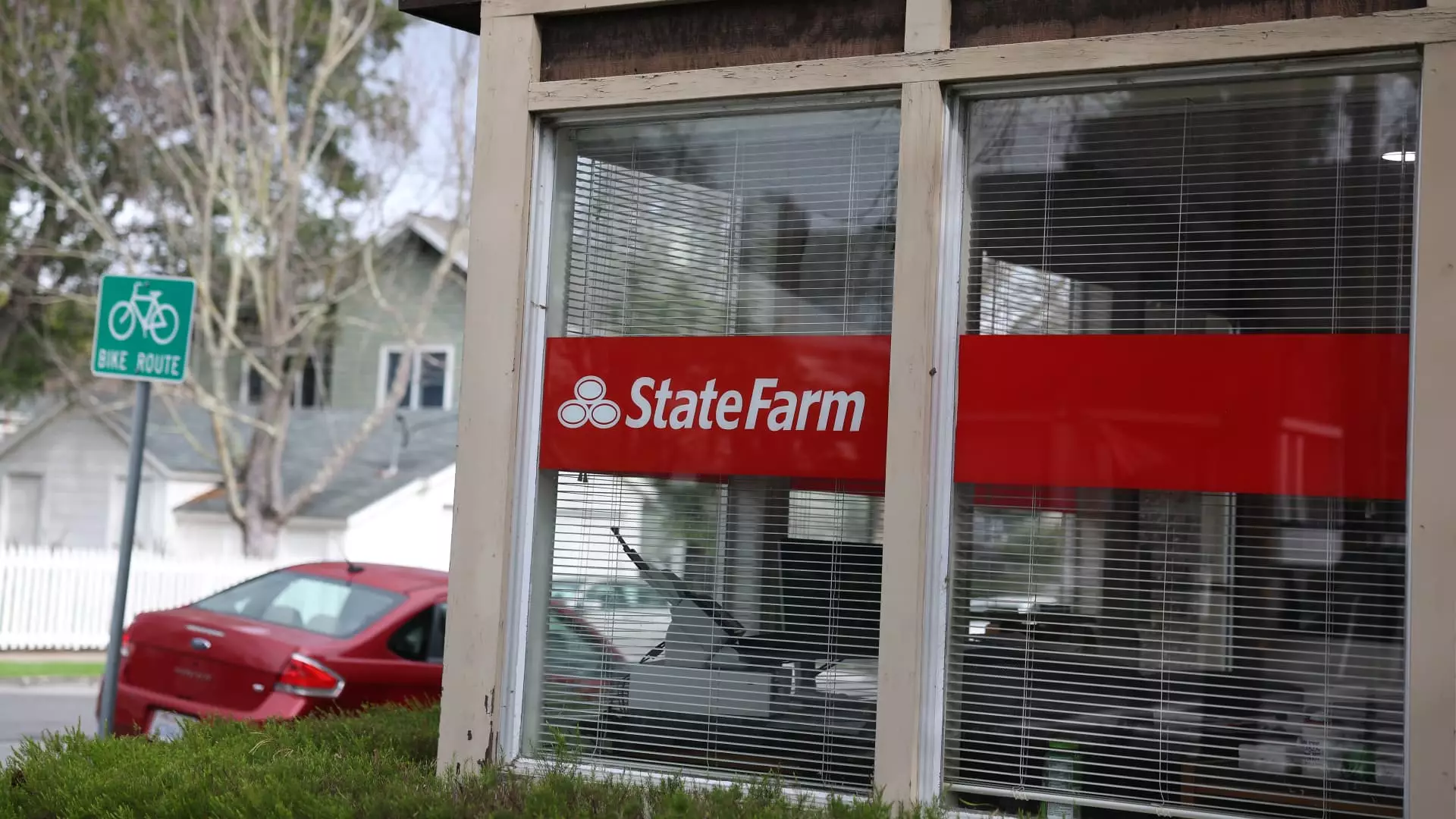State Farm is at a critical junction this week as it seeks approval for a dramatic rate increase for California homeowners amid escalating financial woes. The company’s California arm stands as the largest property insurer in the state, holding roughly 20% of the market with nearly three million policies. Yet, the need to ramp up rates stems from a dire reality: a staggering $250 billion to $275 billion in damages caused by the relentless wildfires that swept through Los Angeles this year. The sheer scope of this disaster has left the insurer scrambling, prompting an application for an emergency rate hike that could determine its very survival.
In this complicated maze of financial distress, State Farm argues that bolstering its reserves is essential for not only its stability but also for the customers relying on its continued coverage. With the stakes at an all-time high, the company’s representatives have presented their case in an Oakland courtroom, echoing the plea for the public to understand the existential threat at hand. However, the picture painted by the insurance department’s attorney, likening the situation to the Titanic, raises alarm bells about potential fallout—3 million Californians could find themselves without adequate protection if the ship sinks.
Rising Strain from Natural Disasters
California’s landscape is becoming increasingly perilous for insurers. The state’s insurers have reported losses that often exceed the premiums they collect, pushing a significant number of companies to limit new business or pull back altogether. State Farm’s decision to halt new homeowners’ policies in May 2023 and its subsequent non-renewal of over 72,000 existing policies starkly highlights the crumbling foundation on which these insurance models stand. The rising frequency and severity of natural disasters are no longer outliers; they are the new normal, creating an unsustainable market that few companies can navigate effectively.
This environment begs the question: how can insurers like State Farm justify their rate hikes? In previous attempts, the company sought to increase premiums by as much as 22% before scaling it back to 17%, raising eyebrows and skepticism among consumer advocates. Critics, such as those from the advocacy group Consumer Watchdog, are quick to assert that the insurance giant has yet to substantiate its claims about financial necessity. Their argument resonates with a community already reeling from disaster, who may perceive these hikes as opportunistic rather than essential.
The Broader Impact on Policyholders
The ramifications of such substantial rate increases ripple outward, affecting not just State Farm but the very fabric of California’s housing market. If customers are forced to foot higher premiums while their coverage dwindles, the desperation could drive many into a precarious position—either uninsured or underinsured. The implications extend beyond homeowners to renters and even landlords anticipating their own rate hikes for renter dwelling policies.
Additionally, with the state insurance commissioner, Ricardo Lara, historically hesitant to endorse significant rate rises, the passage of such hikes becomes even more convoluted. Lara’s tenure has been marked by an effort to balance the needs of consumers with those of insurers operating in an increasingly hostile environment. If regulatory bodies remain tight-lipped in the face of substantial demands, it opens the floodgates for weakened policy frameworks that could collapse under financial strain.
The Critical Need for Sustainable Solutions
Despite the inherent challenges, there are opportunities to fortify the insurance landscape in California. State Farm’s proposals must be viewed within a larger context that reflects the necessary adjustments in policy frameworks. The state has introduced a “Sustainable Insurance Strategy” to reform how insurers assess risk and set rates, incorporating factors like catastrophe modeling and reinsurance costs.
However, one must question whether these efforts can come to fruition in time to turn the tide. Janet Ruiz from the Insurance Information Institute has pointed out that implementing this strategy is crucial for rectifying the systemic issues that have plagued California’s insurance market. If done correctly, it could pave the way for a marketplace capable of supporting both consumers and insurers. Yet, if history is an indicator, pushing through these reforms could be an uphill battle, largely contingent on political will and the willingness of the industry itself to adapt.
In this tumultuous landscape, the precariousness of State Farm’s financial situation is emblematic of a broader struggle in California. The demand for increased rates captures a moment of reckoning for insurers, regulators, and the public alike. With lives and livelihoods hanging in the balance, the question remains: will the state strike a balance that minimizes pain for consumers while salvaging the integrity of its insurers?

